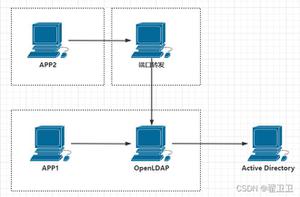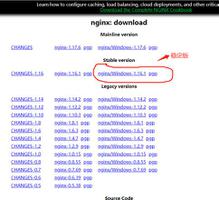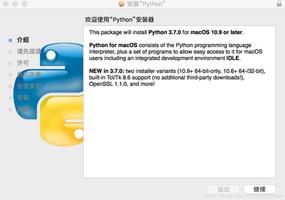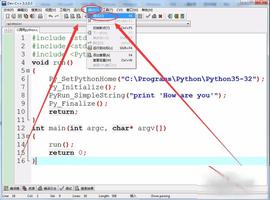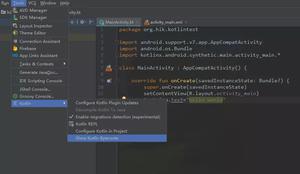Python3中性能测试工具Locust安装使用

Locust安装使用:
安装:
python3" title="python3">python3中 ---> pip3 install locust
验证是否安装成功---> 终端中输入 locust --help 显示帮助信息表示安装成功
locust官网 ---> https://www.locust.io/
官网帮助文档 ---> https://docs.locust.io/en/latest/installation.html
大并发量测试时,建议在linux系统下进行;
启动:
终端中--->进入到代码目录: locust -f xxxoo.py --host=xxxxx.com
- -f 指定性能测试脚本文件
- -host 被测试应用的URL地址【如果不填写,读取继承(HttpLocust)类中定义的host】
- 通过浏览器访问:http://localhost:8089(Locust启动网络监控器,默认为端口号为:8089)
Number of users to simulate 设置虚拟用户数
Hatch rate(users spawned/second)每秒产生(启动)的虚拟用户数 , 点击Start swarming 按钮,开始运行性能测试。
no-web模式运行启动
终端中-->进入代码目录:>> locust -f xxoo.py --no-web -c10 -r2 -t 1m
启动参数:
--no-web 表示不使用web界面运行测试。 -c 设置虚拟用户数 。 -r 设置每秒启动虚拟用户数 。 -t 设置运行时间.。
no-web模式运行将测试结果保存到当前.py目录中:locust -f xxoo.py --csv=起一个名字
例如:
locust -f test3.py --csv=foobar --no-web -c2 -t10s
分布式压测:
主从机中必须运行相同的测试代码(把主机中代码复制一份到多个从机中),主机负责收集测试数据,从机进行施压测试;
在主机终端中-->进入代码目录:>> locust -f xxxoo.py --master
从机中终端中-->进入代码目录:>> locust -f xxxoo.py --slave --master-host=主机ip
分布式压测no-web模式保存结果到主机中当前运行.py的目录中:>>locust -f test2.py --csv=foobartt --no-web -c2 -t10s --master
locust --help 查看帮助信息
概述
Locust寓意蝗虫,蝗虫过境,寸草不生;而Locust工具生成并发请求就和一大群蝗虫一般,向我们的被测系统发起攻击,以此测试系统在高并发压力下是否能正常运转。
Locust测试框架中,采用python进行开发,对常见的http(s)协议的系统,Locust采用request库作为客户端,在发请求时和request库使用方法一样。
在模拟并发时,Locust采用协程、非阻塞IO来实现网络层的并发请求,因此单台压力机也能产生数千并发请求,再加上对分布式运行的支持,Locust能在使用较少压力机的前提下支持极高的并发数测试。
实例脚本
伪代码:
from locust import HttpLocust, TaskSet, taskclass WebsiteTasks(TaskSet):
def on_start(self): #进行初始化的工作,每个Locust用户开始做的第一件事
payload = {
"username": "test_user",
"password": "123456",
}
header = {
"User-Agent":"Mozilla/5.0 (Windows NT 6.1; WOW64) AppleWebKit/537.36 (KHTML, like Gecko) Chrome/58.0.3029.110 Safari/537.36",
}
self.client.post("/login",data=payload,headers=header)#self.client属性使用Python request库的所有方法,调用和使用方法和requests完全一致;
@task(5) #通过@task()装饰的方法为一个事务,方法的参数用于指定该行为的执行权重,参数越大每次被虚拟用户执行的概率越高,默认为1
def index(self):
self.client.get("/")
@task(1)
def about(self):
self.client.get("/about/")
class WebsiteUser(HttpLocust):
host = "https://github.com/" #被测系统的host,在终端中启动locust时没有指定--host参数时才会用到
task_set = WebsiteTasks #TaskSet类,该类定义用户任务信息,必填。这里就是:WebsiteTasks类名,因为该类继承TaskSet;
min_wait = 5000 #每个用户执行两个任务间隔时间的上下限(毫秒),具体数值在上下限中随机取值,若不指定默认间隔时间固定为1秒
max_wait = 15000
伪代码中对https://github.com/网站的测试场景,先模拟用户登录系统,然后随机访问首页/和/about/,请求比例5:1,并且在测试过程中,两次请求的间隔时间1-5秒的随机值;
on_start方法,在正式执行测试前执行一次,主要用于完成一些初始化的工作,例如登录操作;
WebsiteTasks类中如何去调用 WebsiteUser(HttpLocust)类中定义的字段和方法呢?
通过在WebsiteTasks类中self.locust.xxoo xxoo就是我们在WebsiteUser类中定义的字段或方法;
伪代码:
from locust import HttpLocust, TaskSet, taskimport hashlib
import queue
class WebsiteTasks(TaskSet):
@task(5)
def index(self):
data = self.locust.user_data_queue #获取WebsiteUser里面定义的ser_data_queue队列
md5_data=self.locust.md5_encryption() #获取WebsiteUser里面定义的md5_encryption()方法
self.client.get("/")
class WebsiteUser(HttpLocust):
host = "https://github.com/"
task_set = WebsiteTasks
min_wait = 5000
max_wait = 15000
user_data_queue = queue.Queue()
def md5_encryption(self,star):
'''md5加密方法'''
obj = hashlib.md5()
obj.update(bytes(star,encoding="utf-8"))
result = obj.hexdigest()
return result
伪代码中测试场景如何表达?
代码主要包含两个类:
- WebsiteUser继承(HttpLocust,而HttpLocust继承自Locust)
- WebsiteTasks继承(TaskSet)
在Locust测试脚本中,所有业务测试场景都是在Locust和TaskSet两个类的继承子类中进行描述;
简单说:Locust类就类似一群蝗虫,而每只蝗虫就是一个类的实例。TaskSet类就类似蝗虫的大脑,控制蝗虫的具体行为,即实际业务场景测试对应的任务集;
源码中:class Locust(object)和class HttpLocust(Locust)
class Locust(object):"""
Represents a "user" which is to be hatched and attack the system that is to be load tested.
The behaviour of this user is defined by the task_set attribute, which should point to a
:py:class:`TaskSet <locust.core.TaskSet>` class.
This class should usually be subclassed by a class that defines some kind of client. For
example when load testing an HTTP system, you probably want to use the
:py:class:`HttpLocust <locust.core.HttpLocust>` class.
"""
host = None
"""Base hostname to swarm. i.e: http://127.0.0.1:1234"""
min_wait = 1000
"""Minimum waiting time between the execution of locust tasks"""
max_wait = 1000
"""Maximum waiting time between the execution of locust tasks"""
task_set = None
"""TaskSet class that defines the execution behaviour of this locust"""
stop_timeout = None
"""Number of seconds after which the Locust will die. If None it won't timeout."""
weight = 10
"""Probability of locust being chosen. The higher the weight, the greater is the chance of it being chosen."""
client = NoClientWarningRaiser()
_catch_exceptions = True
def __init__(self):
super(Locust, self).__init__()
def run(self):
try:
self.task_set(self).run()
except StopLocust:
pass
except (RescheduleTask, RescheduleTaskImmediately) as e:
class HttpLocust(Locust):
"""
Represents an HTTP "user" which is to be hatched and attack the system that is to be load tested.
The behaviour of this user is defined by the task_set attribute, which should point to a
:py:class:`TaskSet <locust.core.TaskSet>` class.
This class creates a *client* attribute on instantiation which is an HTTP client with support
for keeping a user session between requests.
"""
client = None
"""
Instance of HttpSession that is created upon instantiation of Locust.
The client support cookies, and therefore keeps the session between HTTP requests.
"""
def __init__(self):
super(HttpLocust, self).__init__()
if self.host is None:
raise LocustError("You must specify the base host. Either in the host attribute in the Locust class, or on the command line using the --host option.")
self.client = HttpSession(base_url=self.host)
在Locust类中,静态字段client即客户端的请求方法,这里的client字段没有绑定客户端请求方法,因此在使用Locust时,需要先继承Locust类class HttpLocust(Locust),然后在self.client = HttpSession(base_url=self.host)绑定客户端请求方法;
对于常见的HTTP(s)协议,Locust已经实现了HttpLocust类,其self.client=HttpSession(base_url=self.host),而HttpSession继承自requests.Session。因此在测试HTTP(s)的Locust脚本中,可以通过client属性来使用Python requests库的所 有方法,调用方式与 reqeusts完全一致。另外,由于requests.Session的使用,client的方法调用之间就自动具有了状态记忆功能。常见的场景就是,在登录系统后可以维持登录状态的Session,从而后续HTTP请求操作都能带上登录状态;
Locust类中,除了client属性,还有几个属性需要关注:
- task_set ---> 指向一个TaskSet类,TaskSet类定义了用户的任务信息,该静态字段为必填;
- max_wait/min_wait ---> 每个用户执行两个任务间隔的上下限(毫秒),具体数值在上下限中随机取值,若不指定则默认间隔时间为1秒;
- host --->被测试系统的host,当在终端中启动locust时没有指定--host参数时才会用到;
- weight--->同时运行多个Locust类时,用于控制不同类型的任务执行权重;
Locust流程,测试开始后,每个虚拟用户(Locust实例)运行逻辑都会遵守如下规律:
- 先执行WebsiteTasks中的on_start(只执行一次),作为初始化;
- 从WebsiteTasks中随机挑选(如果定义了任务间的权重关系,那么就按照权重关系随机挑选)一个任务执行;
- 根据Locust类中min_wait和max_wait定义的间隔时间范围(如果TaskSet类中也定义了min_wait或者max_wait,以TaskSet中的优先),在时间范围中随机取一个值,休眠等待;
- 重复2~3步骤,直到测试任务终止;
class TaskSet
TaskSet类实现了虚拟用户所执行任务的调度算法,包括规划任务执行顺序(schedule_task)、挑选下一个任务(execute_next_task)、执行任务(execute_task)、休眠等待(wait)、中断控制(interrupt)等待。在此基础上,就可以在TaskSet子类中采用非常简洁的方式来描述虚拟用户的业务测试场景,对虚拟用户的所有行为进行组织和描述,并可以对不同任务的权重进行配置。
@task
通过@task()装饰的方法为一个事务。方法的参数用于指定该行为的执行权重。参数越大每次被虚拟用户执行的概率越高。如果不设置默认为1。
TaskSet子类中定义任务信息时,采取两种方式:@task装饰器和tasks属性。
采用@task装饰器定义任务信息时:
from locust import TaskSet, taskclass UserBehavior(TaskSet):
@task(1)
def test_job1(self):
self.client.get('/test1')
@task(3)
def test_job2(self):
self.client.get('/test2')
采用tasks属性定义任务信息时
from locust import TaskSetdef test_job1(obj):
obj.client.get('/test1')
def test_job2(obj):
obj.client.get('/test2')
class UserBehavior(TaskSet):
tasks = {test_job1:1, test_job2:3}
# tasks = [(test_job1,1), (test_job1,3)] # 两种方式等价
上面两种定义任务信息方式中,均设置了权重属性,即执行test_job2的频率是test_job1的两倍。
若不指定,默认比例为1:1。
关联
在某些请求中,需要携带之前response中提取的参数,常见场景就是session_id。Python中可用通过re正则匹配,对于返回的html页面,可用采用lxml库来定位获取需要的参数;
from locust import HttpLocust, TaskSet, taskfrom lxml import etree
class WebsiteTasks(TaskSet):
def get_session(self,html): #关联例子
tages = etree.HTML(html)
return tages.xpath("//div[@class='btnbox']/input[@name='session']/@value")[0]
def on_start(self):
html = self.client.get('/index')
session = self.get_session(html.text)
payload = {
"username": "test_user",
"password": "123456",
'session' : session
}
header = {
"User-Agent":"Mozilla/5.0 (Windows NT 6.1; WOW64) AppleWebKit/537.36 (KHTML, like Gecko) Chrome/58.0.3029.110 Safari/537.36",
}
self.client.post("/login",data=payload,headers=header)
@task(5)
def index(self):
self.client.get("/")
assert response['ErrorCode']==0 #断言@task(1)
def about(self):
self.client.get("/about/")
class WebsiteUser(HttpLocust):
host = "https://github.com/"
task_set = WebsiteTasks
min_wait = 5000
max_wait = 15000
参数化
循环取数据,数据可重复使用
例如:模拟3个用户并发请求网页,共有100个URL地址,每个虚拟用户都会依次循环加载100个URL地址
#!/usr/bin/env python# -*- coding: utf-8 -*-
__author__ = 'tian'
__data__ = '2019/8/9 11:02'
from locust import TaskSet,HttpLocust,task
class UserBehavior(TaskSet):
'''并发用户可以重复使用数据'''
def on_start(self):
self.index = 0
@task
def test_visit(self):
url = self.locust.share_data[self.index]
print("这里是visit url:{0}".format(url))
self.index = (self.index +1)%len(self.locust.share_data)
print("这index是多少啊;",self.index)
self.client.get(url)
class WebsiteUser(HttpLocust):
host = 'http://debugtalk.com'
task_set = UserBehavior
share_data = ['url1','url2','url3','url4','url5']
min_wait = 1000
max_wait = 3000
保证并发测试数据唯一性,不循环取数据;
所有并发虚拟用户共享同一份测试数据,并且保证虚拟用户使用的数据不重复;
例如:模拟3用户并发注册账号,共有9个账号,要求注册账号不重复,注册完毕后结束测试:
采用队列
from locust import TaskSet, task, HttpLocustimport queue
class UserBehavior(TaskSet):
@task
def test_register(self):
try:
data = self.locust.user_data_queue.get()
except queue.Empty:
print('account data run out, test ended.')
exit(0)
print('register with user: {}, pwd: {}'\
.format(data['username'], data['password']))
payload = {
'username': data['username'],
'password': data['password']
}
self.client.post('/register', data=payload)
class WebsiteUser(HttpLocust):
host = 'http://debugtalk.com'
task_set = UserBehavior
user_data_queue = queue.Queue()
for index in range(100):
data = {
"username": "test%04d" % index,
"password": "pwd%04d" % index,
"email": "test%04d@debugtalk.test" % index,
"phone": "186%08d" % index,
}
user_data_queue.put_nowait(data)
min_wait = 1000
max_wait = 3000
保证并发测试数据唯一性,循环取数据;
所有并发虚拟用户共享同一份测试数据,保证并发虚拟用户使用的数据不重复,并且数据可循环重复使用;
例如:模拟3个用户并发登录账号,总共有9个账号,要求并发登录账号不相同,但数据可循环使用;
from locust import TaskSet, task, HttpLocustimport queue
class UserBehavior(TaskSet):
@task
def test_register(self):
try:
data = self.locust.user_data_queue.get()
except queue.Empty:
print('account data run out, test ended')
exit(0)
print('register with user: {0}, pwd: {1}' .format(data['username'], data['password']))
payload = {
'username': data['username'],
'password': data['password']
}
self.client.post('/register', data=payload)
self.locust.user_data_queue.put_nowait(data)
class WebsiteUser(HttpLocust):
host = 'http://debugtalk.com'
task_set = UserBehavior
user_data_queue = queue.Queue()
for index in range(100):
data = {
"username": "test%04d" % index,
"password": "pwd%04d" % index,
"email": "test%04d@debugtalk.test" % index,
"phone": "186%08d" % index,
}
user_data_queue.put_nowait(data)
min_wait = 1000
max_wait = 3000
断言(即检查点)
通过with self.client.get("url地址",catch_response=True) as response的形式;
response.status_code获取http响应码进行判断,失败后会加到统计错误表中;
python自带的断言assert失败后代码就不会向下走,且失败后不会被Locust报表统计进去;
默认不写参数catch_response=False断言无效,将catch_response=True才生效;
下面例子中:
首先使用python断言对接口返回值进行判断(python断言不通过,代码就不向下执行,get请求数为0),通过后对该接口的http响应是否为200进行判断;
@taskdef all_interface(self):
#豆瓣图书api为例子
with self.client.get("https://api.douban.com/v2/book/1220562",name="/LhcActivity/GetActConfig",catch_response=True) as response:
assert response.json()['rating']['max']==10 #python断言对接口返回值中的max字段进行断言if response.status_code ==200: #对http响应码是否200进行判断
response.success()
else:
response.failure("GetActConfig[Failed!]")
以上是 Python3中性能测试工具Locust安装使用 的全部内容, 来源链接: utcz.com/z/387019.html

